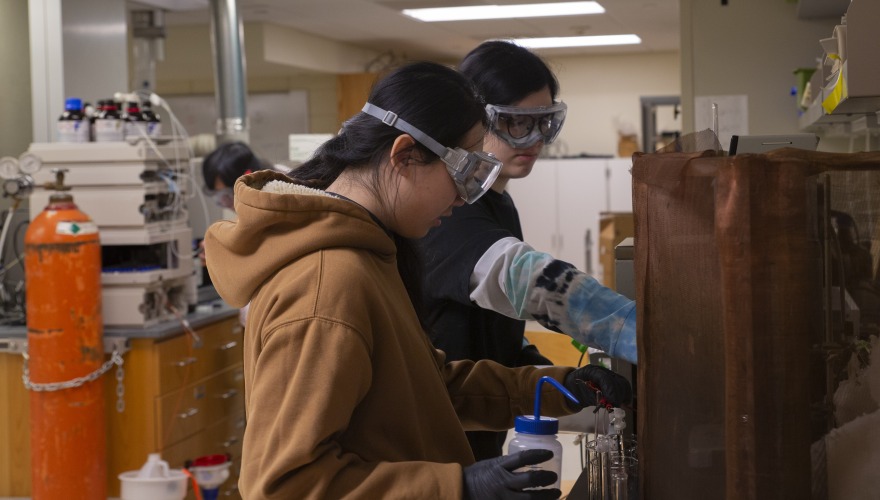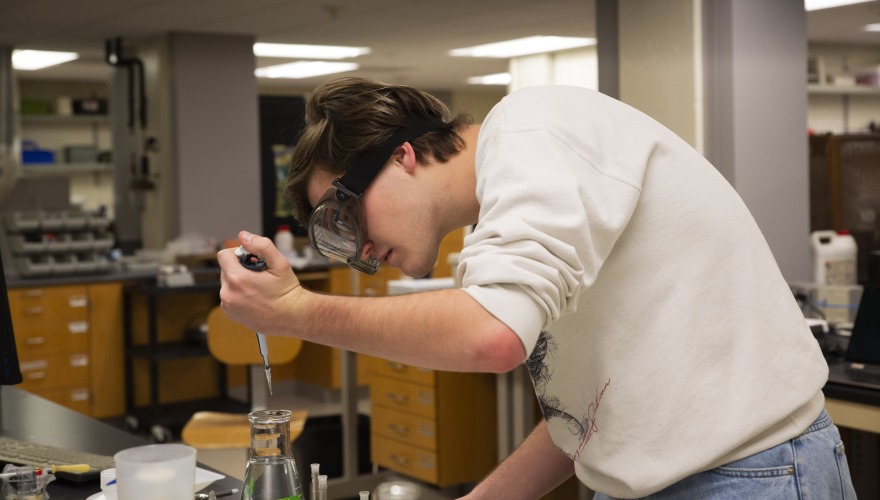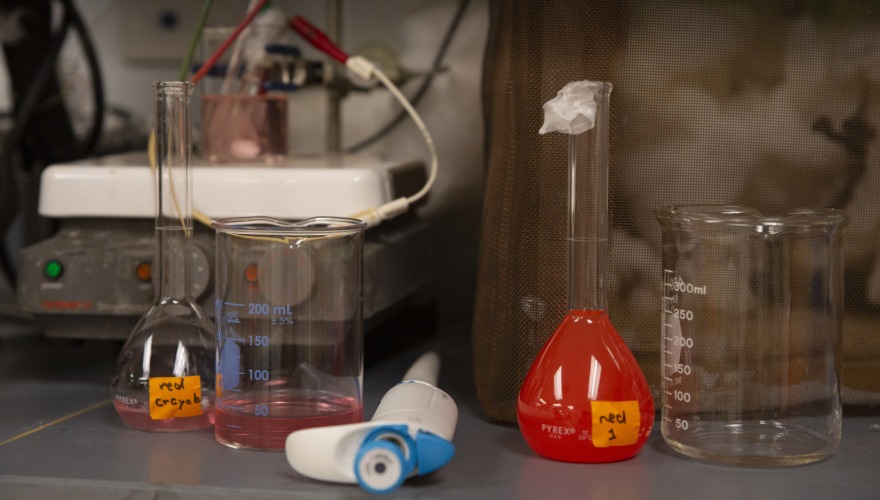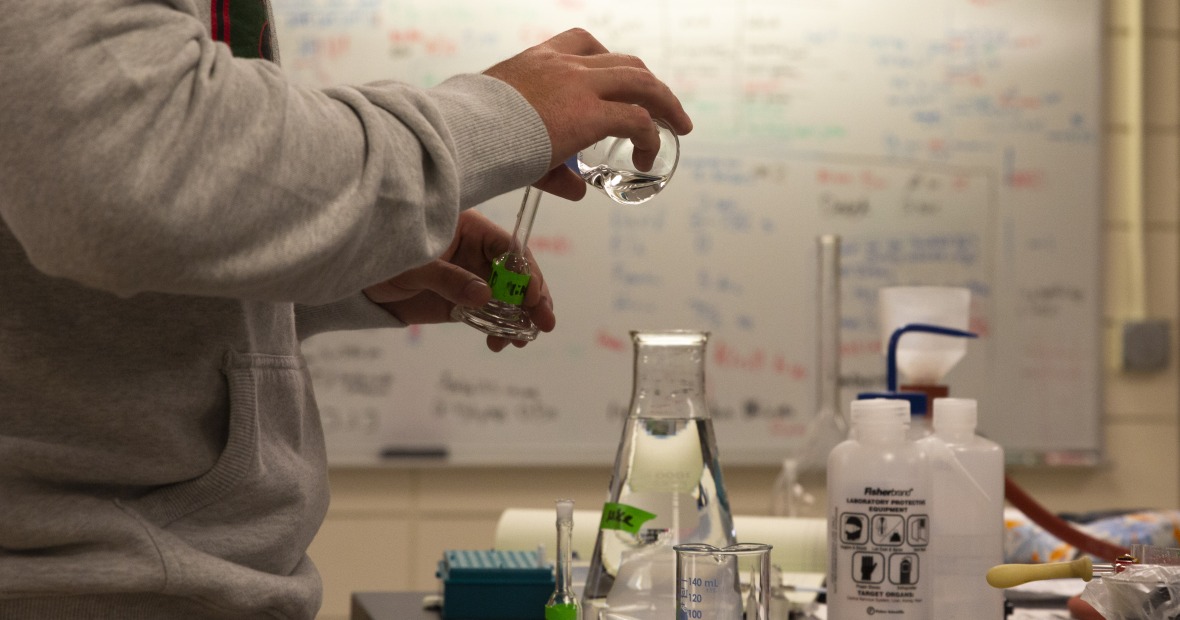Chemistry of the Commonplace
Students in CHM 358 Instrumental Analysis with Molly MacInnes, assistant professor of chemistry, are bringing everyday products into the laboratory for intense scientific scrutiny.
For the course’s final research project, MacInnes asked students to design and conduct a research project employing at least one of the analytical methods they’d studied during the semester. What they would investigate with those techniques? That was up to the students.
“It’s meant to be a project that they design themselves. They have a lot of control and freedom when it comes to their research question,” says MacInnes.
The 300-level course delves into the instruments and methods that chemists use to separate, identify, and measure compounds. Throughout the semester, the students have learned techniques to identify the types and quantities of matter present in samples. So, when it came time to plan their final projects, most aimed those same questions at pantry products they held near and dear.
Lane Kohler ’25 and Samantha Chu ’24 were inspired by a recent lawsuit involving a sports beverage they both enjoy. They decided to evaluate a selection of popular drinks marketed as “natural” for the presence of artificial dyes and sweeteners. Their project relies on spectrophotometry, a technique that measures the intensity of light absorbed by a sample solution. At different pH levels, natural dyes tend to change color, therefore absorbing more or less light, Chu explains. In contrast, chemical dyes are pretty stable at varying pH, so their absorption of light during spectrophotometry shouldn’t change.

Malina Cantemir ’24 and Han Xie ’25 considered several analytical chemistry techniques to answer their research question: are there heavy metals in children’s watercolors? “Not every product shares its formulation but a lot of them claim to be non-toxic, so we’re analyzing the pigments to determine if that’s really true,” says Cantemir.
Cantemir and Xie decided on an electrochemical approach called anodic stripping voltammetry. The technique measures the electrode potential at which a sample undergoes oxidation — a reaction where electrons are shed and can be measured as a current. This potential is unique to different chemicals, so tracking when oxidation occurs allows chemists to detect even the smallest presence of heavy metals such as lead, cadmium, and cobalt.

Cantemir and Xie aren’t the only research team looking for heavy metals; Hugh Werner ’25 and Beau Leavenworth ’25 have set out to analyze the heavy metal composition of leading e-cigarettes using atomic absorption spectroscopy. “There are already health concerns when it comes to vaping, but the possible presence of lead, zinc, copper, nickel … that’s a whole other health risk,” explains Werner.
Several of MacInnes’ students are analyzing over-the-counter painkiller medications. One team is determining the actual concentration of the compounds in products that combine acetaminophen and ibuprofen, while other students chose to study the degradation of painkiller active ingredients when exposed to UV light by storage in clear containers. When it was time to brainstorm experiments, Hong Doan ’25 immediately thought of painkillers. “I take ibuprofen all the time, and so do lots of people,” Doan says. “I think the best part of this class is that we use really complicated techniques to analyze things that are very related to our everyday life.”


